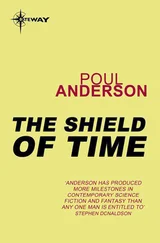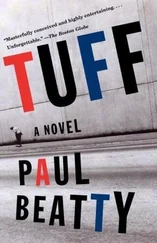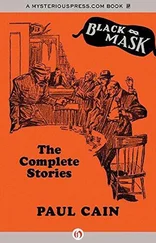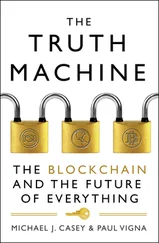Hominy slumped in his seat and clasped his hands behind his head and looked out the window and into his past. I flipped on the radio and let the Dodger game fill the silence. Hominy missed the good ol’ days and Sunshine Sammy. I missed Vin Scully, the dulcet voice of objectivity, calling the play-by-play. For a baseball puritan like myself, the good ol’ days were the days before the designated hitter, interleague play, steroids, and assholes in the outfield, baseball caps perched precariously atop their heads, flying off with every missed cut-off man and pop fly lost in the national pastime sun. They were me and Daddy, our mouths full of Dodger dogs and soda, two black bleacher and dharma bums sharing the June night heat with the moths, cursing a fifth-place team, and longing for the good ol’ days of Garvey, Cey, Koufax, Dusty, Drysdale, and Lasorda. For Hominy any day when he could personify American primitivism was a good ol’ day. It meant that he was still alive, and sometimes even the carnival coon in the dunk tank misses the attention. And this country, the latent high school homosexual that it is, the mulatto passing for white that it is, the Neanderthal incessantly plucking its unibrow that it is, needs people like him. It needs somebody to throw baseballs at, to fag-bash, to nigger-stomp, to invade, to embargo. Anything that, like baseball, keeps a country that’s constantly preening in the mirror from actually looking in the mirror and remembering where the bodies are buried. That night the Dodgers lost their third straight. Hominy sat up in his seat and rubbed a porthole into the suddenly fogged-up windshield.
“We home yet?” he asked.
We were midway between the El Segundo and Rosecrans Avenue off-ramps, and it hit me: there used to be a sign that read DICKENS — NEXT EXIT. Hominy missed the good ol’ days. I missed my father driving us back from the Pomona State Fair, elbowing me awake, the Dodger postgame on the radio as I rubbed the sleep from my eyes just in time to see that sign, DICKENS — NEXT EXIT, and know I was home. Shit, I missed that sign. And what are cities really, besides signs and arbitrary boundaries?
The green-and-white placard didn’t cost much: a sheet of aluminum the size of a queen-sized bed, two six-foot metal poles, some traffic cones and flares, two reflective orange vests, two cans of spray paint, a couple of hard hats, and that night’s sleep. Thanks to a downloaded copy of the Manual of Uniform Traffic Control Devices, I had the design specifications for everything from the proper shade of green (Pantone 342) to the exact dimensions (60'' x 36''), letter size (8''), and font (Highway Gothic). And after a long night of painting, cutting down the post to size, and stenciling SUNSHINE SAMMY CONSTRUCTION to the doors of the truck in removable paint, Hominy and I set back toward the freeway. Other than pouring and waiting for the cement foundation to dry, installing a traffic control device isn’t all that different from planting a tree, and in the light of the high beams I set to work. Cleared the ivy, dug the holes, and planted the sign, while Hominy passed out in the front seat, listening to jazz on KLON.
As the sun rose over the El Segundo Boulevard overpass, the morning commute was starting in earnest. And amid the car honking, the rotors of the traffic helicopters beating overhead, and the grinding of truck gears, Hominy and I sat in the breakdown lane appreciating what we’d done. The sign was a dead ringer for any of the other “traffic control devices” one sees during the daily commute. It’d taken only a few hours, but I felt like Michelangelo staring at the Sistine Chapel after four years of hard labor, like Banksy after spending six days searching the Internet for ideas to steal and three minutes of sidewalk vandalism to execute them.
“Massa, signs are powerful things. It almost feels like Dickens exists out there in the smog somewhere.”
“Hominy, what feels better, getting whipped or looking at that sign?”
Hominy thought a moment. “The whip feels good on the back, but the sign feels good in the heart.”
* * *
When we arrived home that morning, I popped open a kitchen-table beer, sent Hominy home, grabbed the latest edition of The Thomas Guide from the bookshelf. At 4,084 square miles, much of Los Angeles County, like the ocean floor, remains in large part unexplored. Even though you needed an advanced degree in geomatics to understand its 800+ pages, The Thomas Guide to Los Angeles County is the spiral-bound Sacagawea for any intrepid explorer trying to navigate this urban oasis-less sprawl. Even in the days of GPS devices and search engines, it sits on the front seat of every taxicab, tow truck, and company car, and no Sureño worth their rolling “California stop” would ever be caught dead without one. I flipped the book open. Every year my father used to bring the new Thomas Guide home, and the first thing I’d do was turn to pages 704–5 and approximate the location of the crib, 205 Bernard Avenue, on the map. Finding my house in that giant tome grounded me somehow. Made me feel loved by the world. But 205 Bernard Avenue sat on a nameless peach-colored section of gridiron streets bordered by freeways on each side. I wanted to cry. It hurt knowing that Dickens had been exiled to the netherworld of invisible L.A. communities. Top-secret minority bastions like the Dons and the Avenues that’ve never had or needed Thomas Guide listings, official boundaries, or cheesy billboards announcing, “You are now entering…” or “You are now leaving…” because when the voice inside your head (the one you swear up and down isn’t prejudice or racism) tells you to roll up the windows and lock the doors, you know you’ve entered the Jungle or Fruittown, and that when you start breathing again, you’ve exited. I dug up a blue marker, drew a crooked outline of my hometown as best as I could remember it, and scribbled DICKENS in big Dodger-blue letters across pages 704–5, and a little pictogram of the exit sign I’d just put up. If I ever raise the nerve, one day I’m going to erect two more signs. So if you find yourself hurtling southbound on the 110 freeway, speeding past two yellow-and-black blurs that read WATCH OUT FOR FALLING HOME PRICES and CAUTION — BLACK ON BLACK CRIME AHEAD, you’ll know whom to thank for the roadside warnings.
THE DUM DUM DONUT INTELLECTUALS
The Sunday after installing the roadside sign I wanted to make a formal announcement of my plan to reanimate the city of Dickens. And what better place to do so than the next meeting of the Dum Dum Donut Intellectuals, the closest approximation we had to a representative government.
One of the many sad ironies of African-American life is that every banal dysfunctional social gathering is called a “function.” And black functions never start on time, so it’s impossible to gauge how to arrive fashionably late without taking a chance of missing the event altogether. Not wanting to have to sit through the reading of the minutes, I waited until the Raiders game reached halftime. Since my father’s death, the Dum Dum Donut Intellectuals had devolved into a group of star-struck, middle-class black out-of-towners and academics who met bimonthly to fawn over the semifamous Foy Cheshire. As much as black America treasures its fallen heroes, it was hard to tell if they were more impressed with his resiliency or that despite all he’d been through he still drove a vintage 1956 Mercedes 300SL. Nevertheless, they hovered around, hoping to impress him with their insight into an indigent black community that, if they’d just taken their racial blinders off for one second, they’d realize was no longer black but predominantly Latino.
Читать дальше












